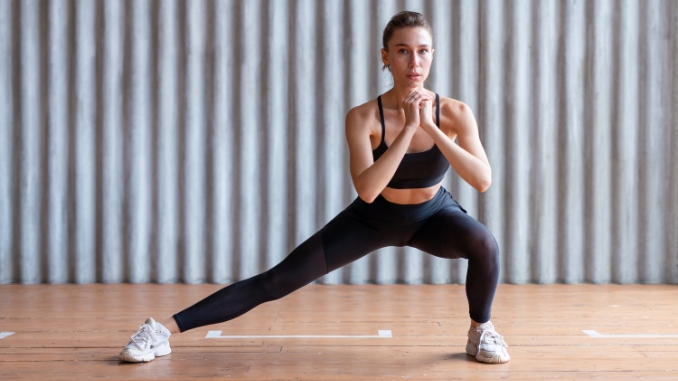For me, a successful workout always starts with proper preparation. It’s not just about getting my mind in the right place—it’s about ensuring my body is ready to perform at its best and avoid injury.
One thing I never skip is dynamic stretching, especially for my legs. Unlike static stretches, which I save for the cooldown, dynamic stretches involve active movements that warm my muscles and joints up through their full range of motion.
This is crucial for muscles like my quadriceps, hamstrings, hip flexors, calves, and glutes, which take on a lot of strain during a workout.
By incorporating dynamic leg stretches [1] into my warm-up, I’ve found that my flexibility improves, my performance gets a boost, and I reduce the risk of injury. It’s the best way to ensure my body is ready for whatever physical challenge comes next.
Understanding Dynamic Stretches
Dynamic stretching involves moving your body through various motions, gradually increasing reach and speed. Unlike static stretching, which holds a position, dynamic stretching uses movement to prepare muscles and joints for activity.
It increases blood flow, raises muscle temperature, and improves joint mobility, making it an adequate warm-up.
Dynamic stretches, like leg swings, actively engage muscles, warming up critical areas like the hip flexors, hamstrings, and glutes.
These movements mirror the actions performed during a workout, ensuring muscles are ready for exercise and reducing the risk of injury.
Science Behind Dynamic Stretching
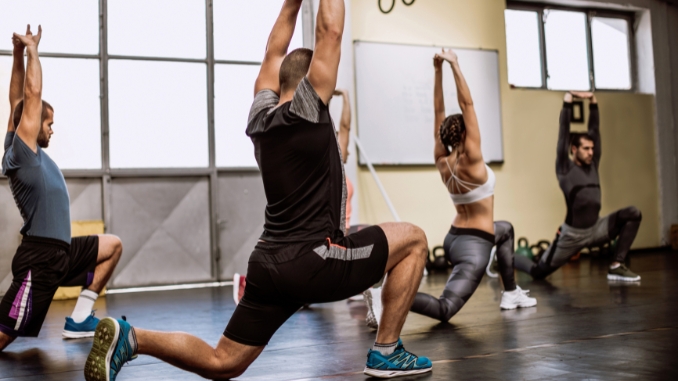
- Increased Blood Flow: Dynamic stretching elevates heart rate and circulation, delivering more oxygen and nutrients to muscles.
- Enhanced Muscle Elasticity: It raises muscle temperature, making them more pliable and less prone to strains.
- Improved Nervous System Activation: This type of stretching activates the nervous system, enhancing communication between the brain and muscles for better performance in quick, powerful movements.
- Joint Mobility and Flexibility: Dynamic stretching improves joint flexibility by moving through a full range of motion, which is crucial for preventing injuries, especially in the legs.
Why It’s Essential For Leg Workouts
From my experience, I’ve learned that the legs are genuinely the body’s powerhouse. Whether walking, running, jumping, or lifting, your legs do most of the work.
That’s why I always ensure that key muscles like the quadriceps, hamstrings, calves, glutes, and hip flexors are correctly warmed up before getting into any workout.
When these muscles and joints are warmed up, I can feel the difference—my performance improves, and I can push myself harder without risking injury. Trust me, taking a few extra minutes to warm up your legs makes all the difference.
Dynamic stretching is particularly beneficial for the legs because:
- It targets all major leg muscles: Dynamic stretches engage multiple muscle groups in the legs simultaneously, ensuring a comprehensive warm-up.
- It prepares the muscles for specific movements: The movements in dynamic stretching mimic those you’ll perform during your workout, whether running, squatting, or lunging. This prepares your muscles for the specific demands of your activity.
- It reduces the risk of injury: By warming up the muscles and increasing their flexibility, dynamic stretching helps prevent strains, tears, and other injuries when muscles are cold and stiff.
Key Benefits of Dynamic Stretches
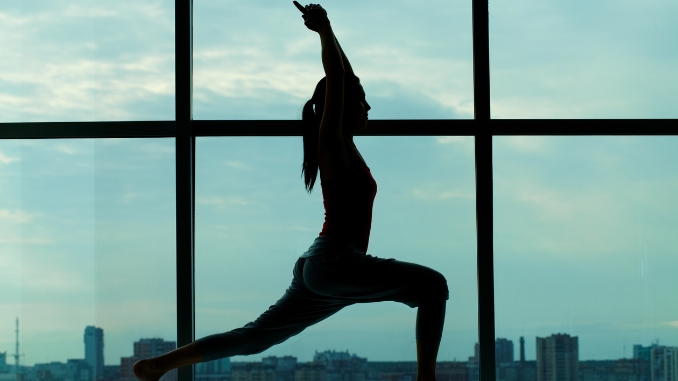
- Enhanced Flexibility and Range of Motion: Dynamic stretching continuously engages multiple muscles, improving leg flexibility and reducing injury risk.
- Improved Muscle Activation: These stretches mimic workout movements, activating muscles for better strength and responsiveness in activities like sprinting or cycling.
- Injury Prevention: Dynamic stretching warms up muscles [2], making them more pliable and enhancing joint mobility, which helps prevent injuries.
- Improved Blood Circulation and Oxygenation: It boosts blood flow, delivering oxygen and nutrients to muscles, enhancing performance, and reducing soreness.
- Mental Preparation: Dynamic stretching improves focus and coordination, mentally preparing you for the workout.
Anatomy of the Legs – Muscle Targeted by Dynamic Stretches
To fully appreciate the benefits of dynamic stretching, it’s essential to understand the key muscles in your legs that these stretches target. These muscles are critical in supporting movement, stability, and power.
1. Quadriceps
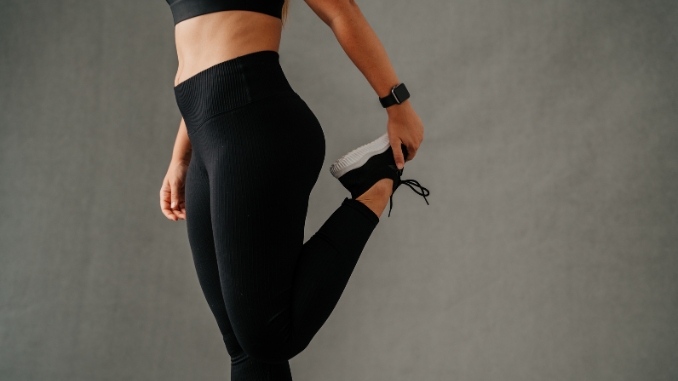
The quadriceps at the front of the thigh are vital for knee extension and hip flexion in activities like running and jumping. Dynamic stretches, such as walking lunges and leg swings, improve their flexibility and strength. The quadriceps consists of four muscles:
- Rectus Femoris: Hip flexion and knee extension.
- Vastus Lateralis: Knee extension.
- Vastus Medialis: Knee extension.
- Vastus Intermedius: Aids in knee extension.
2. Hamstring
The hamstrings, at the back of the thigh, control knee flexion and hip extension. Dynamic stretches like butt kick and toy soldiers activate these muscles, improving flexibility and reducing injury risk. The hamstrings include:
- Biceps Femoris: Knee flexion and hip extension.
- Semitendinosus: Assists in knee flexion and hip extension.
- Semimembranosus: Aids knee flexion and hip extension.
3. Calves (Gastrocnemius and Soleus)
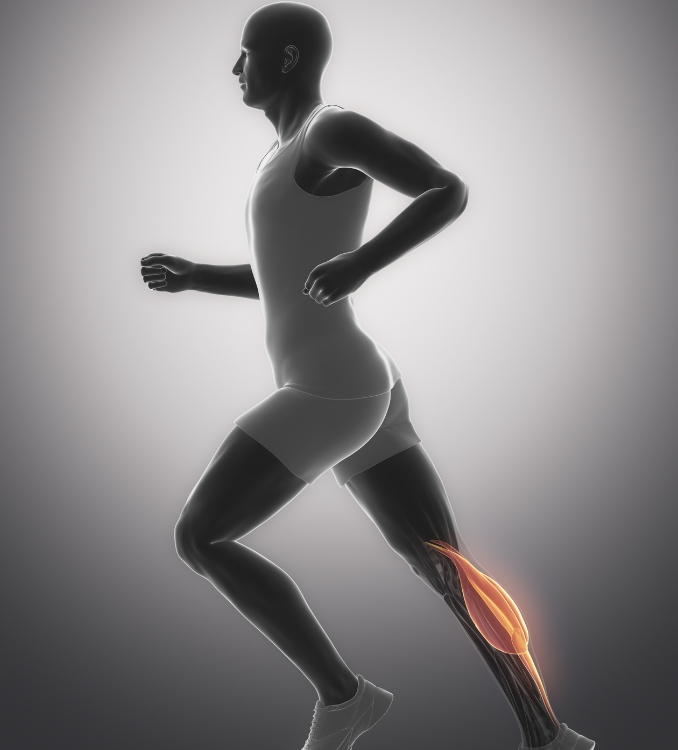
The calves consist of the gastrocnemius and soleus, controlling plantar flexion for walking and jumping. Tight calves can lead to injuries. Dynamic stretches like calf raises and leg swings enhance flexibility and strength.
4. Hip Flexors and Abductors
Hip flexors lift the knees and bend the waist, while adductors bring legs toward the midline. Tightness can affect posture and mobility. Dynamic stretches like lateral lunges activate these muscles, improving hip mobility. Key hip flexors include:
- Iliopsoas: Crucial for hip flexion.
- Rectus Femoris: Also a hip flexor.
- Sartorius: Assists in hip flexion and rotation.
Hip Abductors: Hip abductors are responsible for moving the legs away from the midline of the body, contributing to stability and balance during movement. Key hip abductor muscles include:
- Gluteus Medius: Plays a vital role in stabilizing the pelvis during walking and running.
- Gluteus Minimus: Assists in hip abduction and internal rotation.
- Tensor Fasciae Latae (TFL): Helps with hip flexion, abduction, and stabilization of the pelvis.
5. Glutes
The glutes are responsible for hip extension, rotation, and abduction. Dynamic stretches like step-throughs activate the glutes, enhancing hip strength and stability, which is vital for injury prevention. The glutes include:
- Gluteus Maximus: Responsible for hip extension.
- Gluteus Medius: Important for hip abduction.
- Gluteus Minimus: Aids in hip abduction and internal rotation.
Top 6 Dynamic Stretches for Legs
Now that you’ve got a good understanding of how your legs work and why dynamic stretching is so important, let me share my go-to dynamic stretches that have helped me prepare for any workout.
These are my top 6 dynamic stretches for legs, and they target all the major muscle groups—trust me, they’ll give you a complete warm-up that boosts flexibility, mobility, and overall performance. I always feel ready to tackle whatever workout I’ve planned when I stick to these.
1. Leg Swings
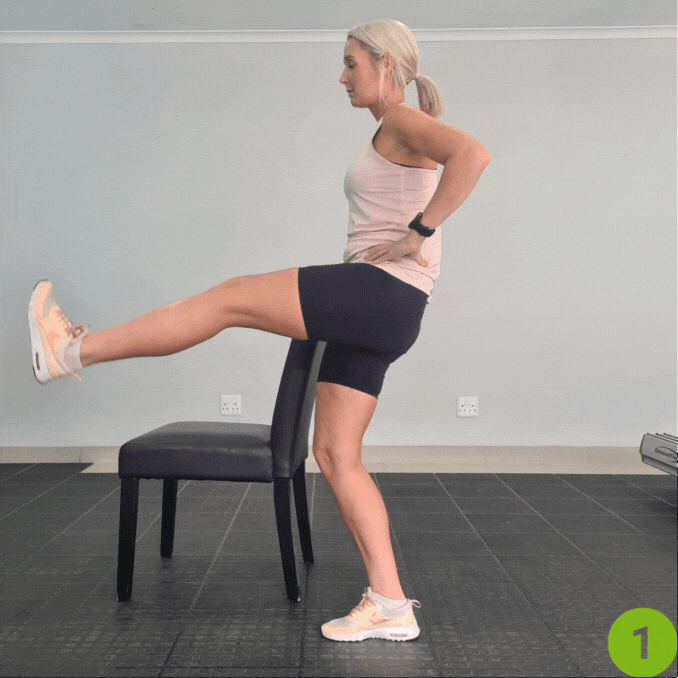
- Begin in an upright standing position next to a wall or chair for support, feet shoulder-width apart, maintaining good alignment with your head, shoulders, hips, and legs.
- Place one hand on your hips and the other hand on the back of the chair.
- Engage your core and start swinging your leg forward and backward in a controlled manner.
- Repeat the movements. Start with three sets of 10 repetitions on each side.
2. Lunges with Side Bend
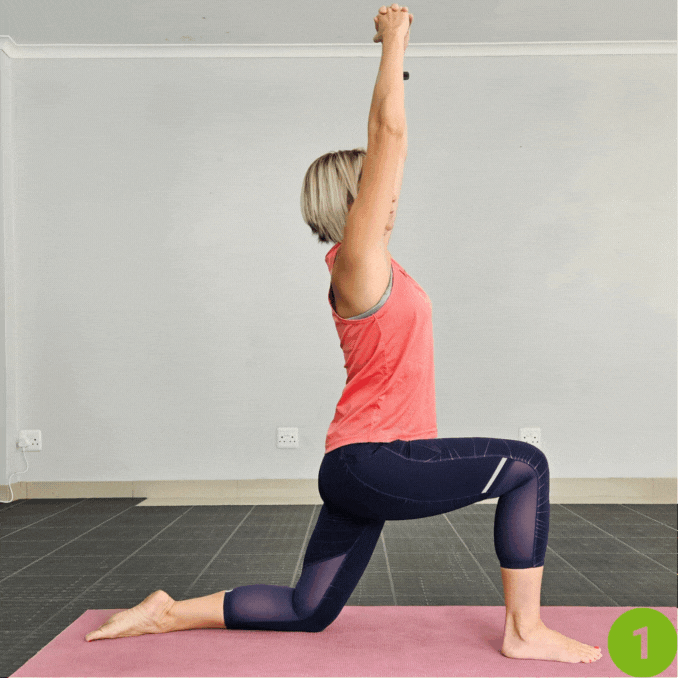
- Begin in an upright standing position with your feet shoulder-width apart, maintaining good alignment with your head, shoulders, hips, and legs.
- Raise your hands over your head, engage your core, and then take a step forward to lower your foot into a lunge position with both knees bent at 90 degrees.
- As you lunge, bend your torso to one side.
- Return to the starting position by pushing off your front foot and untwisting your torso.
- Repeat the movement on the opposite side.
- Start with 3 sets of 10 repetitions on each side.
3. High Knees
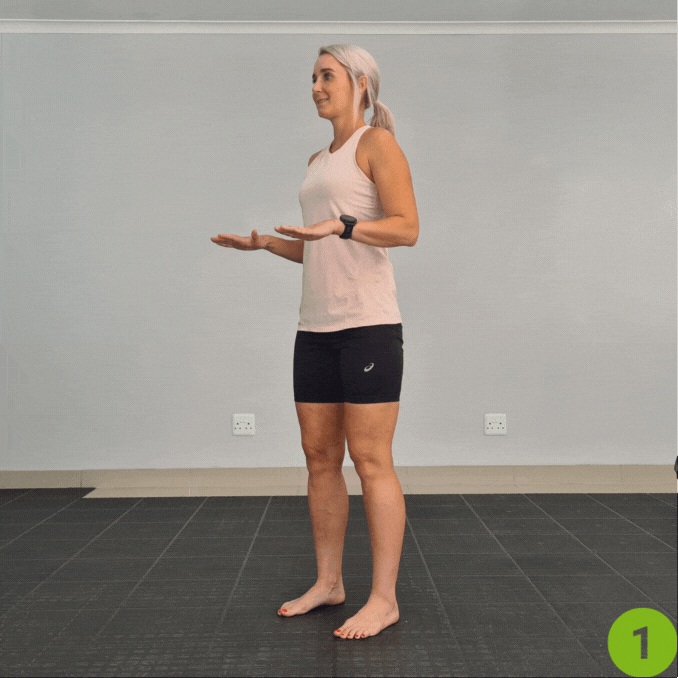
- Begin in an upright standing position with your feet shoulder-width apart, maintaining good alignment with your head, shoulders, hips, and legs.
- Place your hand in front, elbows bent 90 degrees, and palms facing down.
- Engage your core and then lift your knee alternately as high as possible towards your chest.
- Start with three sets of 10 repetitions on each side.
4. Glute Kickback
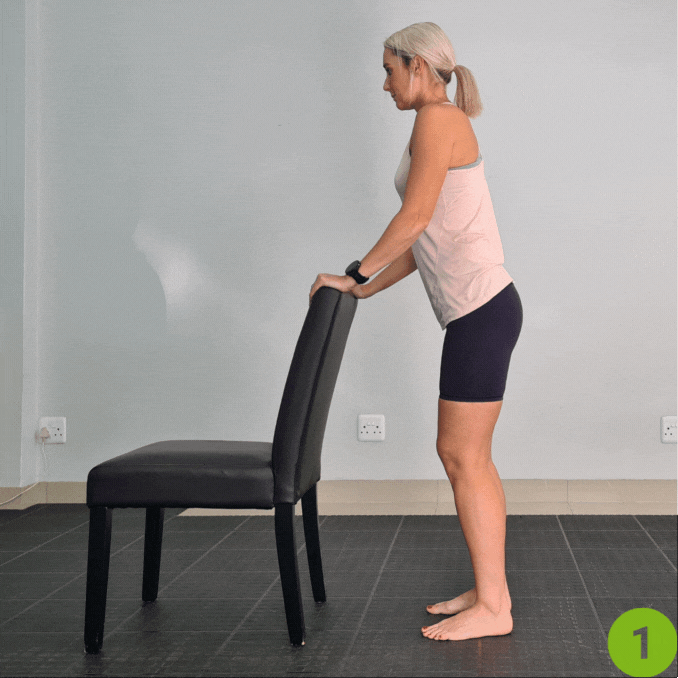
- Begin in an upright standing position next to a wall or chair for support with your feet shoulder-width apart, maintaining good alignment with your head, shoulders, hips, and legs.
- Engage your core, shift your weight onto your left leg, and slightly bend your knee.
- Keeping your right leg straight, slowly extend it backward, squeezing your glutes at the top of the movement.
- Return your right leg to the starting position without letting your foot touch the ground.
- Perform 3 sets of 10-15 repetitions on each leg.
5. Lateral Lunges
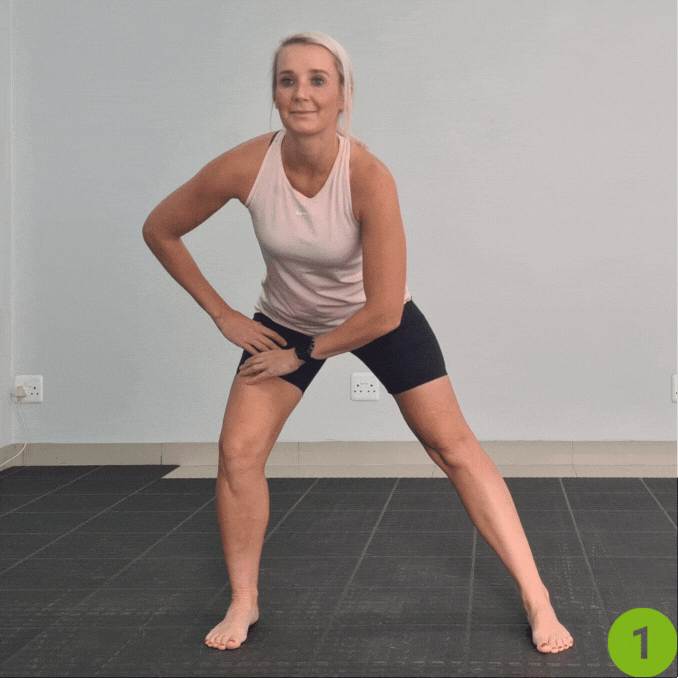
- Begin in an upright standing position with your feet wider than shoulder-width apart, maintaining good alignment with your head, shoulders, and hips.
- Place your hands on your hips.
- Contract your abdominal muscles and bend one knee to shift your body weight to one side, stacking your hip over your knee and ankle.
- Return to the starting position and repeat the movement on the opposite side.
- Start with 1 set of 10 repetitions on each side.
6. Hip Circles
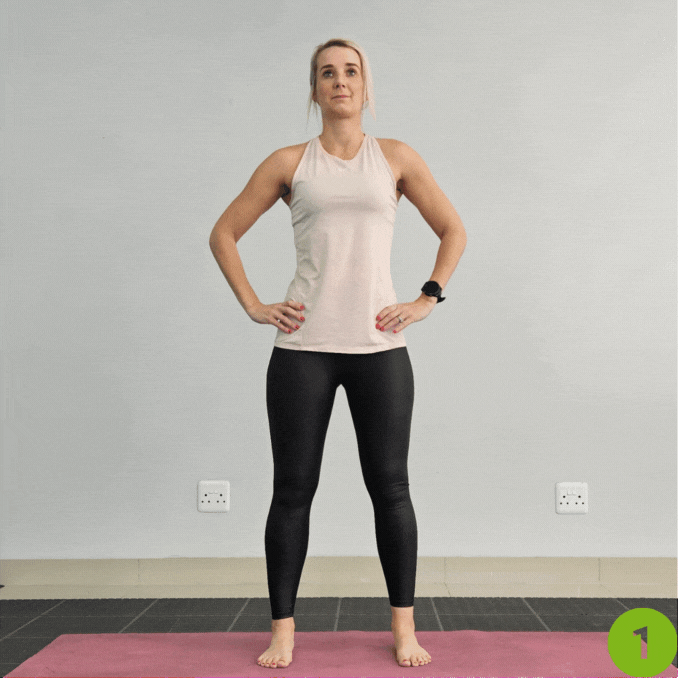
- Begin in an upright standing position with your feet shoulder-width apart, maintaining good alignment with your head, shoulders, hips, and legs.
- Place your hands on your hips, engage your core, and slowly rotate your hips in a circular motion.
- Make large circles by moving your hips forward, to the side, backward, and to the other side.
- Perform 10-15 seconds of circles in one direction, then switch to the opposite direction.
Incorporating Dynamic Stretches for Legs Into Daily Life
Even on days when I’m not working out, I’ve found it super helpful to include a quick dynamic stretching routine. If you’re like me and spend long hours sitting at a desk, this becomes even more important.
Sitting for too long can tighten up your hip flexors, hamstrings, and lower back, which can affect your posture and mobility.
I take short breaks throughout the day to do light dynamic stretches to fight that. Just a few leg swings, lunges, or hip circles every couple of hours can make a big difference.
It keeps my muscles loose, improves circulation, and helps prevent that stiff feeling you get from sitting too long. Working these stretches into my daily routine also helps reduce the risk of aches, pains, and even injury, making it much easier to stay active overall.
Advanced Tips and Modifications
Once you’re comfortable with the basic dynamic stretches, you can incorporate more advanced techniques to enhance your flexibility, strength, and overall fitness.
- Progressive Difficulty: Gradually increase the intensity of dynamic stretches by enhancing range, adding hops, or following with intense exercises like jump squats.
- Incorporating Resistance Bands: Add resistance bands to dynamic stretches for improved muscle activation. Start with light resistance and increase as you build strength.
- Combining Dynamic Stretches with Plyometrics: Dynamic stretches can be combined with plyometrics, such as jump squats, to enhance power and agility, benefiting athletic performance.
- Stretching for Recovery: Use dynamic stretching post-workout to promote blood flow, reduce soreness, and aid recovery with light movements like leg swings.
Common Mistakes and How to Avoid Them

While dynamic stretching is highly beneficial, some common mistakes can reduce its effectiveness or even lead to injury. Here’s what to watch out for:
- Rushing Through Stretches: Rushing leads to poor form and ineffective stretches, increasing injury risk. Perform each movement deliberately, focusing on muscle activation and controlled range of motion.
- Ignoring Balance and Core Engagement: Neglecting balance and core stability can cause unstable movements, risking strain. Engage your core and maintain a stable posture; use support if needed.
- Skipping Warm-Up: Always warm up muscles with 5-10 minutes of light cardio, such as brisk walking, jumping jacks, high knees, arm circles, or dynamic stretches. Skipping this step can lead to strains and tears.
- Overextending Joints: Avoid hyperextending joints, especially during leg swings. Start with a controlled range of motion, gradually increasing as flexibility improves. Always listen to your body.
Conclusion
Dynamic stretches are crucial for any workout, particularly for leg-intensive activities. Incorporating them into your warm-up enhances flexibility, boosts performance, and reduces injury risk. Consistency is essential—make dynamic stretching a regular part of your fitness routine to reap the benefits quickly.
Whether you’re an athlete or someone aiming to maintain flexibility, these stretches are a valuable addition. So, get moving! Try these dynamic stretches before your next workout and notice the difference they make.
Share your favorite stretches or experiences in the comments below; we’d love to hear from you!
What if I told you 11 gentle stretches could help you increase your energy, lose weight, decrease pain, stiffness and stress, and make you happier? Check out this 11 Daily Stretches to Feel and Look Amazing now!
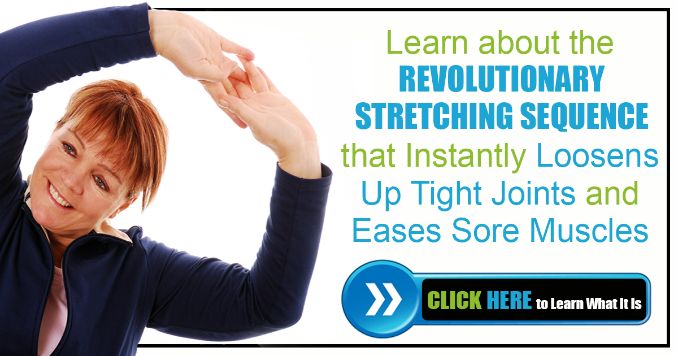

Rick Kaselj MS, is a leading kinesiologist and injury specialist as well as co-creator of the best-selling Unlock Your Hip Flexors program. Rick creates exercise programs that help people heal injuries and eliminate pain, so they can go back to living a full, active, healthy life.

